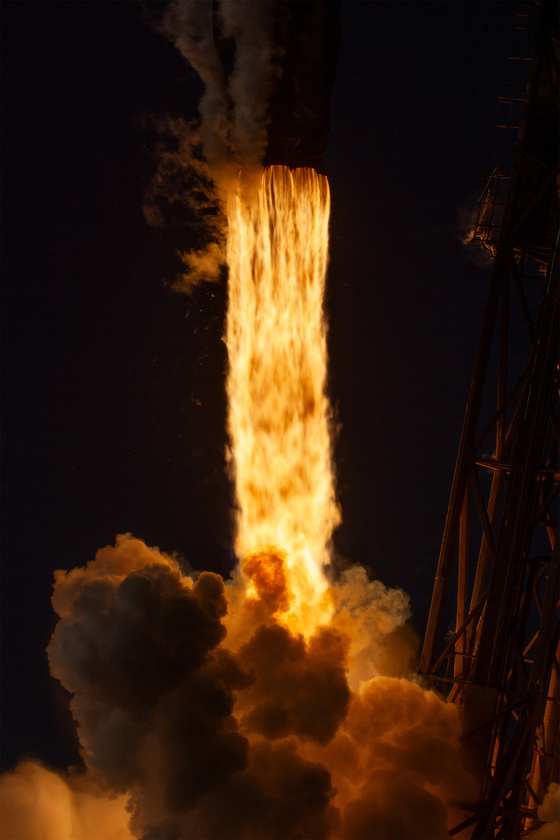In several major rulings in the past week, the supreme court of the United States, SCOTUS dealt heavy blows to President Joe Biden administration's political prosecution of Donald Trump and his supporters, and the corrupt government bureaucracy or so-called deep state.
In a 6-3 decision on the Trump v. United States case Monday, the Court ruled that a former president has substantial immunity from prosecution for official acts committed while in office, but not for unofficial acts.
In the Special Counsel Jack Smith’s federal election interference case, he charged Trump with conspiracy to defraud the United States; conspiracy to obstruct an official proceeding; obstruction of and attempt to obstruct an official proceeding; and conspiracy against rights. The charges which were widely criticized, stem from his months-long investigation into whether the former president was involved in the Jan. 6, 2021, Capitol riot and any alleged interference in the 2020 election result.
Trump pleaded not guilty to all charges and argued he should be immune from prosecution from official acts done as president of the U.S.
"The President enjoys no immunity for his unofficial acts, and not everything the President does is official," SCOTUS Chief Justice John Roberts wrote for the 6 justices in the majority ruling. "The President is not above the law. But Congress may not criminalize the President’s conduct in carrying out the responsibilities of the Executive Branch under the Constitution. And the system of separated powers designed by the Framers has always demanded an energetic, independent Executive. The President therefore may not be prosecuted for exercising his core constitutional powers, and he is entitled, at a minimum, to a presumptive immunity from prosecution for all his official acts. That immunity applies equally to all occupants of the Oval Office, regardless of politics, policy, or party."
Justice Clarence Thomas penned a separate concurrence to the majority opinion "to highlight another way in which this prosecution may violate our constitutional structure" -- the appointment of Jack Smith as special counsel.
"In this case, the Attorney General purported to appoint a private citizen as Special Counsel to prosecute a former President on behalf of the United States," Thomas wrote. "But, I am not sure that any office for the Special Counsel has been ‘established by Law,’ as the Constitution requires. By requiring that Congress create federal offices ‘by Law,’ the Constitution imposes an important check against the President—he cannot create offices at his pleasure. If there is no law establishing the office that the Special Counsel occupies, then he cannot proceed with this prosecution. A private citizen cannot criminally prosecute anyone, let alone a former President. [T]here are serious questions whether the Attorney General has violated that structure by creating an office of the Special Counsel that has not been established by law. Those questions must be answered before this prosecution can proceed. We must respect the Constitution’s separation of powers in all its forms, else we risk rendering its protection of liberty a parchment guarantee."
The Court sent the matter back down to a lower court, to go back to the drawing board and find out whether or not Trump's actions qualify as official in his capacity as president. However the Court gave clear baselines which legal experts say, suggest a high burden of proof placed on the Special Counsel.
Justice Sonia Sotomayor, joined by her fellow left-wing Justices Elena Kagan and Ketanji Brown Jackson, dissented, claiming the decision "makes a mockery of the principle, foundational to our Constitution and system of Government, that no man is above the law."
"Relying on little more than its own misguided wisdom about the need for ‘bold and unhesitating action’ by the President … the Court gives former President Trump all the immunity he asked for and more," she wrote for the minority in the dissenting opinion. "Because our Constitution does not shield a former President from answering for criminal and treasonous acts, I dissent."
Reacting to the ruling Trump wrote on his social media platform Truth Social: "THE SUPREME COURT DECISION IS A MUCH MORE POWERFUL ONE THAN SOME HAD EXPECTED IT TO BE. IT IS BRILLIANTLY WRITTEN AND WISE, AND CLEARS THE STENCH FROM THE BIDEN TRIALS AND HOAXES, ALL OF THEM, THAT HAVE BEEN USED AS AN UNFAIR ATTACK ON CROOKED JOE BIDEN’S POLITICAL OPPONENT, ME. MANY OF THESE FAKE CASES WILL NOW DISAPPEAR, OR WITHER INTO OBSCURITY. GOD BLESS AMERICA!"
Respected law professor Jonathan Turley speaking to Fox News said the court ruling is a major victory for Trump and joked that he couldn't see how the decision doesn't induce heart attack to the special counsel Smith.
SCOTUS also handed down three major rulings on Friday.
The court narrowed the statute that Biden administration's zealous left-wing prosecutors have relied on in their widely criticized 'obstruction of an official proceeding' cases against hundreds of Trump supporters who took part in the January 6, 2021 Capitol protests.
The 6-3 ruling in Fischer v United States, stems from the conviction of Joseph Fischer, a former Pennsylvania police officer, who took part in a "stop the steal” rally on the morning of January 6 before outside the Capitol.
Fischer was one of about 350 people federal prosecutors charged under a federal statute, 18 USC section 1512(c)(2), which says any person who “otherwise obstructs, influences, or impedes any official proceeding, or attempts to do so” can be fined or punished with up to 20 years in prison. The 350 people charged with the crime represent about a quarter of all those charged in connection with the January 6 protests.
The central question in the case was what kind of conduct exactly the language prohibited. The previous section of the law, 18 USC section 1512(c)(1), is more specific, saying anyone is guilty of a crime who “alters, destroys, mutilates, or conceals a record, document, or other object, or attempts to do so, with the intent to impair the object’s integrity or availability for use in an official proceeding.”
“Complex as subsection (c)(1) may look, it simply consists of many specific examples of prohibited actions undertaken with the intent to impair an object’s integrity or availability for use in an official proceeding: altering a record, altering a document, concealing a record, concealing a document, and so on,” Chief Justice Roberts wrote. “Guided by the basic logic that Congress would not go to the trouble of spelling out the list in (c)(1) if a neighboring term swallowed it up, the most sensible inference is that the scope of (c)(2) is defined by reference to (c)(1). To prove a violation of Section 1512(c)(2), the Government must establish that the defendant impaired the availability or integrity for use in an official proceeding of records, documents, objects, or as we earlier explained, other things used in the proceeding, or attempted to do so.”
SCOTUS sent the opinion back to the court of appeals for the District of Columbia circuit for further consideration. The ruling could have profound implications for the January Capitol protesters and could also affect the case against Trump.
In another major decision Friday, the court in a 6-3 decision overturned one of its precedents, the Chevron deference, delivering a major blow to the regulatory powers of unelected bureaucrats in federal agencies. The court’s 1984 opinion in Chevron USA Inc v Natural Resources Defense Council, had required the courts to defer to the knowledge of government bureaucrats in their reasonable interpretation of ambiguous laws passed by congress.
Friday's decision was delivered in two combined cases, Relentless Inc v Department of Commerce and Loper Bright Enterprises v Raimondo. The cases were hung on a complaint from fishing companies over charges they were required to pay to cover the costs of conservation monitoring. The National Marine Fisheries Service, required fishing boat owners to pay $710 a day -- a demand that the fishing companies argued was an overreach of federal agency power.
Writing the opinion, Chief Justice Roberts stated that the Chevron precedent “is overruled.” He slammed the legal theory laid out in the 1984 ruling, claiming it “gravely erred,” and calling it “misguided” and “unworkable.”
“The constitution assigns to the federal judiciary the responsibility and power to adjudicate cases and controversies,” Roberts wrote. “Agencies have no special competence in resolving statutory ambiguities. Courts do.”
The supreme court on Friday, also ruled 6-3 that cities in the US west can criminalize unhoused people sleeping outside even when they lack access to shelter. The ruling is a victory for Grants Pass, Oregon, which in 2019 passed ordinances prohibiting sleeping and camping in its public parks and on its streets, banning unhoused people from “using a blanket, pillow, or cardboard box for protection from the elements.”
Critics have called on local officials to take advantage of the ruling in tackling homeless camps and filth rampant in cities across the country run by left-wing Democrats.
Also earlier last week, SCOTUS rejected Purdue Pharma’s bankruptcy settlement plan, stripped the Securities and Exchange Commission (SEC) of a major tool in fighting securities fraud, and put a hold on an attempt by the Environmental Protection Agency (EPA) to reduce harmful air pollution that drifts across state lines.
Here are supreme court's opinions in Trump v. United States, Fischer v United States, and the combined cases, Relentless Inc v Department of Commerce and Loper Bright Enterprises v Raimond.
















